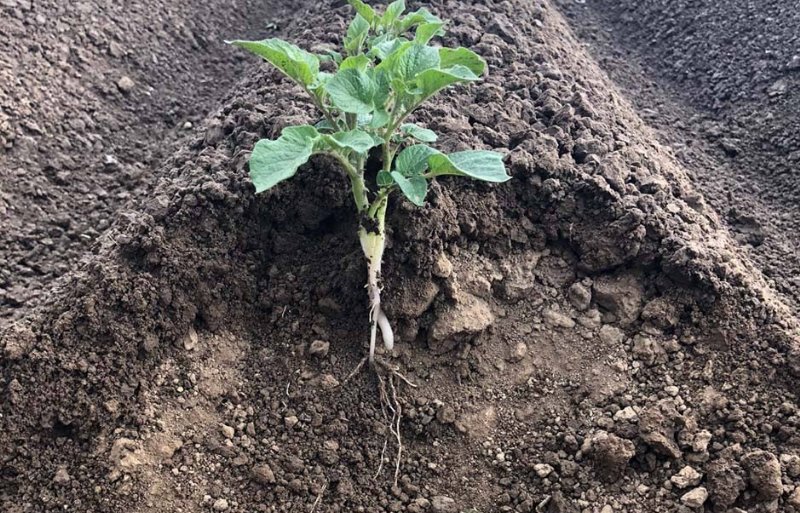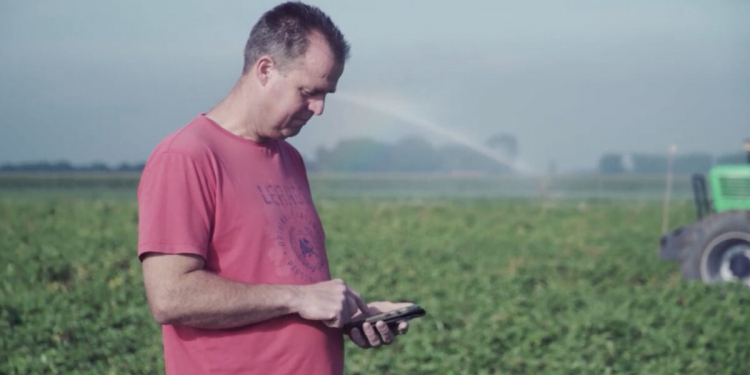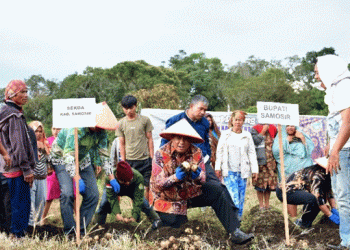Arable farmer and contractor Willie Houbraken uses AgroExact’s weather station and soil moisture sensor to irrigate and spray on time. Like crop advisor Berit Herman of Alliance, he is enthusiastic about the local weather information and the user-friendly app.

You already have the costs for the weather station and the soil moisture sensor of AgroExact if you only need to irrigate once less,’ says Willie Houbraken from Bergeijk in North Brabant. He has an arable farm of 80 hectares, on which he grows potatoes, sugar beet, maize, wheat and carrots. As a contractor, he also carries out spraying and sprinkling on customers with similar crops up to 30 kilometers away from his company. Last year he worked for the first time with the weather station and the soil moisture sensor from AgroExact in a trial field with onions.
The general weather apps Houbraken used to work with were not local, but AgroExact’s is. ‘I can now see what the weather is like here and what it will be 24 hours a day, even at four weather stations in the area. Now I no longer have to drive to a plot to see if it has rained there.’
Houbraken came into contact with AgroExact through agricultural and horticultural specialist Alliance from Nieuwkuijk. Crop advisor Berit Herman of Alliance says that she already knew AgroExact from 2017, when she worked at an arable farm. ‘They had installed one of the first weather stations there, a prototype that they had assembled themselves.’ She explains that AgroExact customers have been given the opportunity from the start to make their wishes and needs clear and that the Bossche company has also used it to improve its products. Over the past two years, AgroExact has installed weather stations and soil moisture sensors throughout the Netherlands.
‘You can already pay off the costs for the weather station and soil moisture sensor if you irrigate less once’ WILLIE HOUBRAKEN, ARABLE FARMER AND CONTRACTOR IN BERGEIJK
Because precipitation in the Netherlands can fall very locally, Herman is enthusiastic about the local information that AgroExact offers. The weather station measures things like wind direction, humidity and precipitation. The soil moisture sensor measures the suction voltage in the soil.
Herman: ‘In the app you enter the type of soil and the crop and the root depth of the plant, where the moisture is absorbed. You will then see an advice line in the app: if it is in the green area, nothing is wrong, but if that direction goes red, it is time to start irrigating.’ According to Herman, by using a soil moisture sensor, a farmer can avoid stress on his crops, so that they grow more evenly and, as a result, have a higher yield.
‘If you look at a plot and see that it is dry, you are always too late. Then the plant has already had a stress period. If you then start irrigating with, for example, 45 millimeters, he will respond with an erratic growth curve. The app is a great tool that ensures that you start watering in time and with smaller amounts, for example three times 15 millimeters. Or that irrigation can be omitted, so that you save costs.’
As an example where the soil moisture sensor really made a difference, she cites a potato field on sandy soil, on which a 50 millimeter shower had fallen. The farmer thought there was something wrong with the soil sensor, because it indicated that irrigation was necessary. It turned out that the rain had run into the gullies between the ridges and that it was bone dry in the middle of the ridges, so that sprinkling was indeed necessary.
Herman would certainly advise farmers to opt for a weather station and soil moisture sensor from AgroExact, because the weather in the Netherlands can differ greatly locally. Houbraken is also pleased with AgroExact’s solutions: ‘Because I now have more insight into the weather conditions, I have more hours that can be sprayed. And for one means you need a high humidity, for the other a low humidity. I can now make better decisions about that, in consultation with Alliance.’









